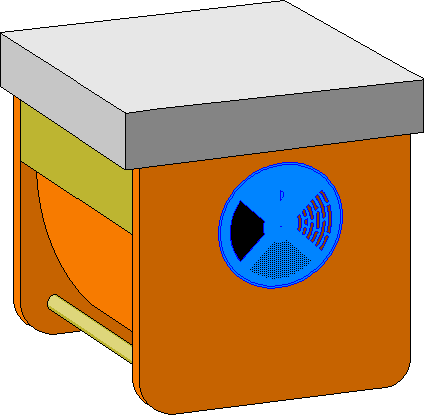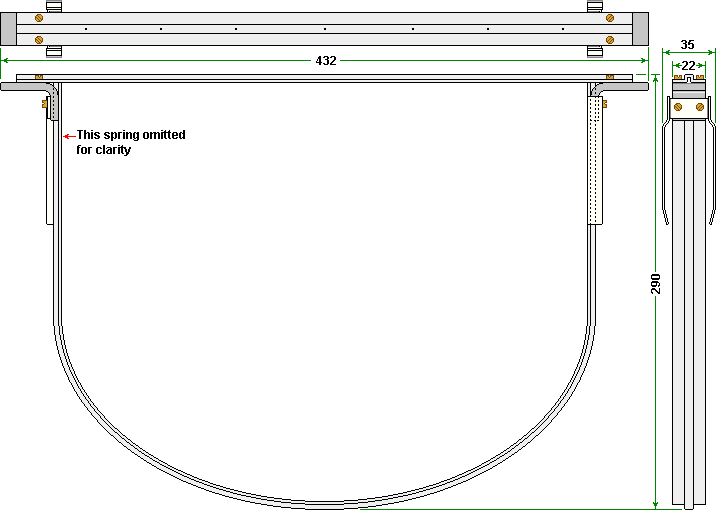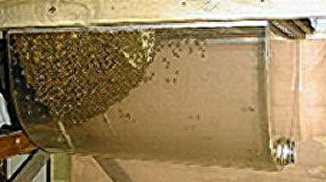Other Beehives
Aluminium Frames
|
|
|
|---|
|
Other Beehives Aluminium Frames |
Catenary Bee Hive |
|---|
|
As I have no personal experience of this type of hive... The following text is transcribed mainly from Len Heath's book "A Case of Hives". I have only ever seen one. It was on display, possibly at the National Honey Show. It was made of grey plastic. R.P. It was designed by Bill Bielby, in 1968, when he was County Beekeeping Lecturer for West Yorkshire. It was made for several years by a Yorkshire firm. It is quite unusual in shape and derives its name from the mathematical curve taken by a freely hanging rope or chain suspended from two points. The entrance is through a plastic disc mounted high up on one flat side, so that the eleven short-lugged frames are aligned the 'warm way' across the line of entry. Originally the frames were accurately made to fit the curve of the box (with normal bee-space around), but later top bars alone were used, as it was realised that bees do not fasten combs to sloping side walls. |

|
|---|
This unusual brood box had the same top rim size as a standard National box and a normal queen excluder and National (or British Commercial) super, would sit on top of it, but of course the unique shape of the brood combs makes such operations as Demaree(ing) or Snelgroving impossible.
Over several years other snags became evident. For example a large surface area of comb on the outer face of the first frame becomes propolised over and goes out of use if bees can fly straight in and on to it. A small modification involving a plywood baffle plate fixed internally opposite the entrance, a bee-space proud of the inner wall, effectively prevents this (and direct draught as well). More serious was the accumulation of debris and condensed water in the narrow base of the Catenary itself; this was corrected by cutting a half-inch (12 mm) drainage hole (loosely plugged with coarse wire wool) at the lowest point. Unfortunately both of Len's hives rotted at the base after about ten years and had to be scrapped. He claims to have enjoyed using them, as an interesting variant, and would happily buy another if they were still available. He reports that they were easy to move to the heather and attracted much comment from other beekeepers, but that he could not recommend them for general use. |
The aluminium frame shown below is not of the same profile as the wooden frames that I have seen. As the original wooden frames were of Smith type top bars, (almost) it is unlikely to have been intended for use in this type of box. The scale of the drawing is 1.5 pixels per mm.


| This Whole colony version was made by Frank Bates, who has made a number of types of observation hive. Follow the link and see the entry/exit details on Frank's site. |
|---|
Dave Cushman.
Page created 16/08/2002
Page updated 04/12/2022
Originated... 16 Aug 2002 Upgraded... 05 January 2005, |
![]()
![]()